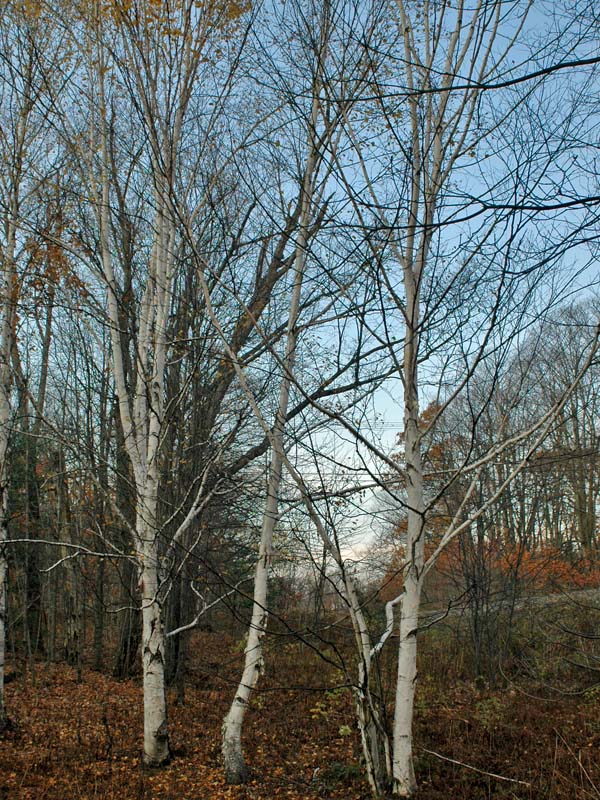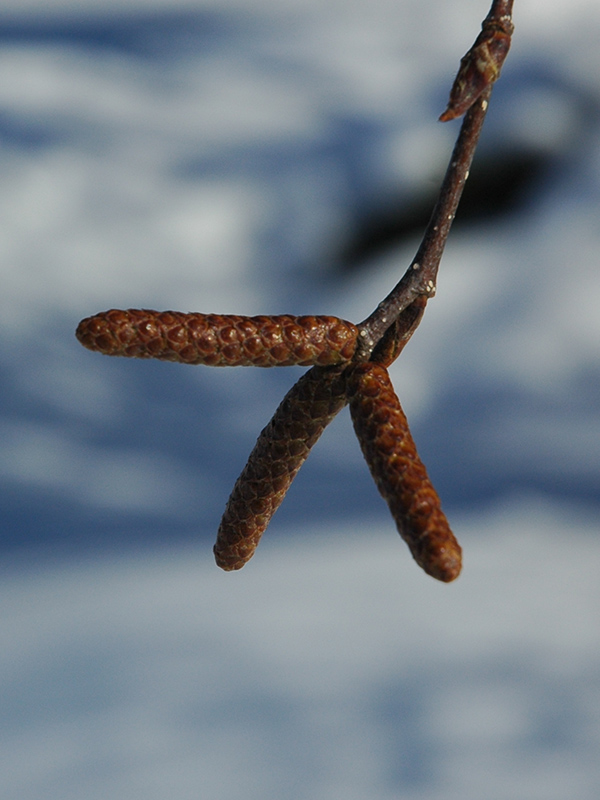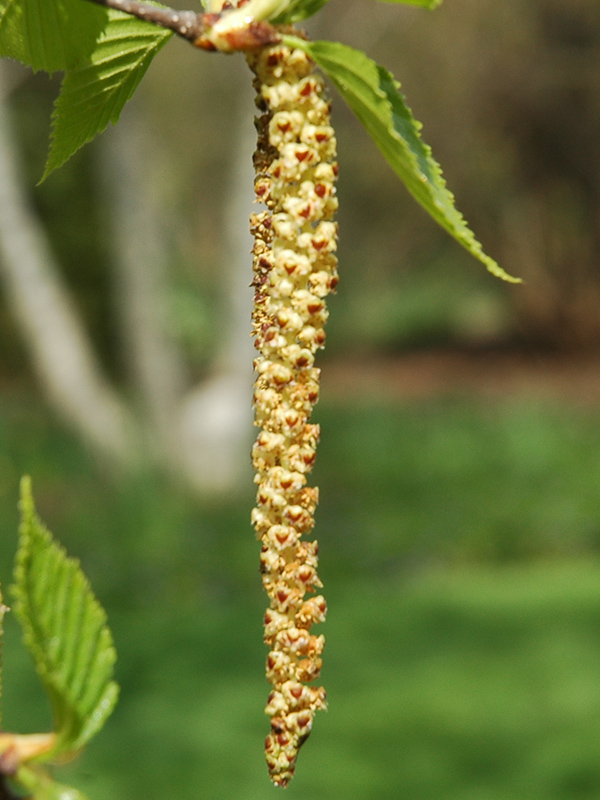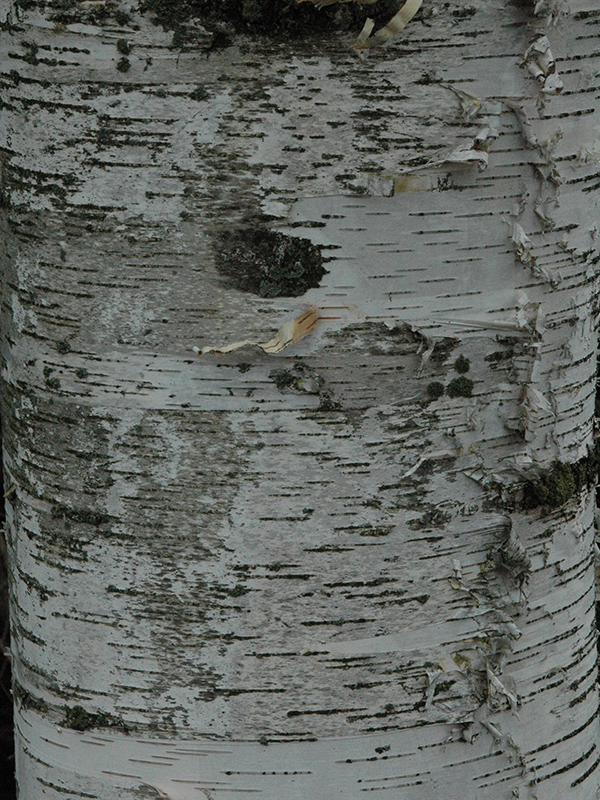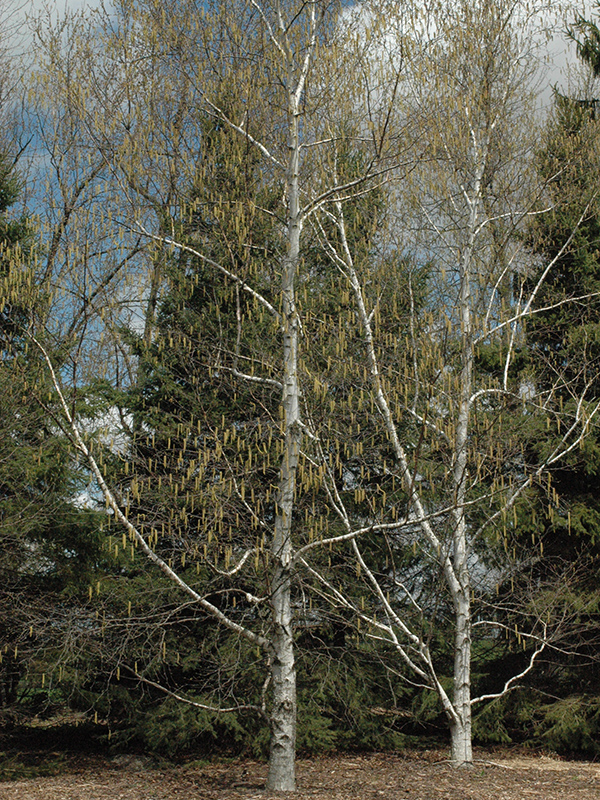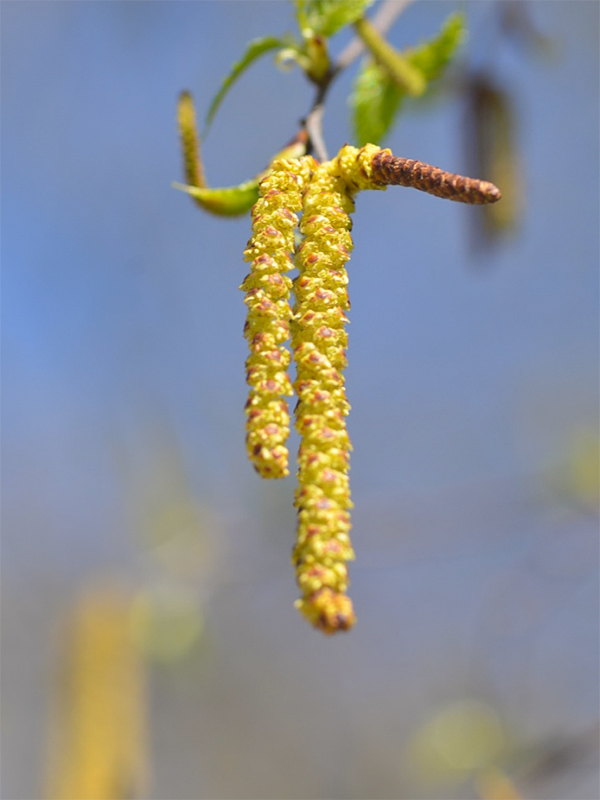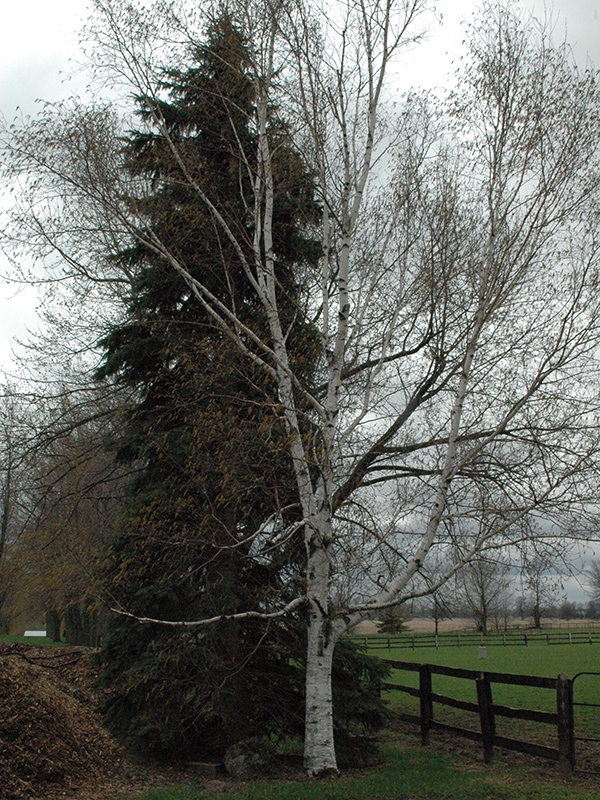
Woody > Betula > Betula papyrifera > Betula papyrifera
Betula papyrifera
Paper Birch
| Family |
| Betulaceae |
| Genus |
| Betula |
| Species |
| papyrifera |
| Category |
| Woody |
| Type |
| Tree (deciduous) |
| Pronunciation |
| USDA Hardiness Zone |
| 2 - 6 |
| Canadian Hardiness Zone |
| 0a - 6a |
| RHS Hardiness Zone |
| H7 |
| Temperature (°C) |
| -46 - (-26) |
| Temperature (°F) |
| (-50) - 0 |
| Height |
| 15 - 21 m |
| Spread |
| 8 - 15 m |
Photographs
Description and Growing Information
Flowering Period
| General Description |
| Betula papyrifera is a small to medium sized tree with white exfoliating bark and dark green ovate leaves. In autumn it has very bright yellow to bright orange leaves and it is usually found in deep wooded areas and along river banks across much of North America where it is a native inhabitant. This species has been placed on the IUCN Red List as least concern. |
| Landscape |
| Parks, estates and large areas where its full form can be appreciated. Handsome for bark and autumn colour. |
| Cultivation |
| Paper birch prefers moist, well drained soil and will adapt to grow in almost any type of soil. It has a shallow root zone and would be suited as a roadside planting, but if pollution is an issue in the area the tree may not do well. |
| Shape |
| Loosely pyramidal when young but oval to rounded at maturity. |
| Growth |
| Fast |
| ID Characteristic |
| The most notable identification characteristics would be its white, paper like bark, pyramidal shape and dark green ovate leaves with small catkins. It has a tall, pyramidal, thin trunk. As the tree matures it begins to show its white paper like bark, when younger it shows darker brown/red bark. |
| Pests |
| Bronze birch borer, and birch leaf miner. |
| Habitat |
| Edges of swamps, lakes and bogs. |
| Bark/Stem Description |
| The bark is a smooth and reddish brown when the tree is young but as the tree matures it starts turning a creamy white colour eventually producing a few black spots. Additionally as the tree matures the bark begins to exfoliate and the white layers peel back to reveal a reddish-orange inner bark. |
| Flower/Leaf Bud Description |
| The buds are Imbricate and are about 0.5 cm to 1 cm in length. They are pointed and divergent. |
| Leaf Description |
| Ovate leaves up to 4 cm long, regularly-toothed, dark green in summer, turning to yellow in the autumn. |
| Flower Description |
| The flowers (greenish-yellow catkins) are usually in groups of 2 or 3 and are about 4.5 cm long and are brown in colour. |
| Fruit Description |
| Small nutlets found on pendulous catkins 2.5 - 3.5 cm long. |
| Colour Description |
| Spectacular clear yellow autumn colour. |
| Texture Description |
| Medium. |
| Notable Specimens |
| Victoria Park, London, Ontario, Canada. Royal Botanical Garden, Burlington, Ontario, Canada. Grey-Bruce Peninsula, Ontario, Canada. |
| Propagation |
| Stratified seed. |
